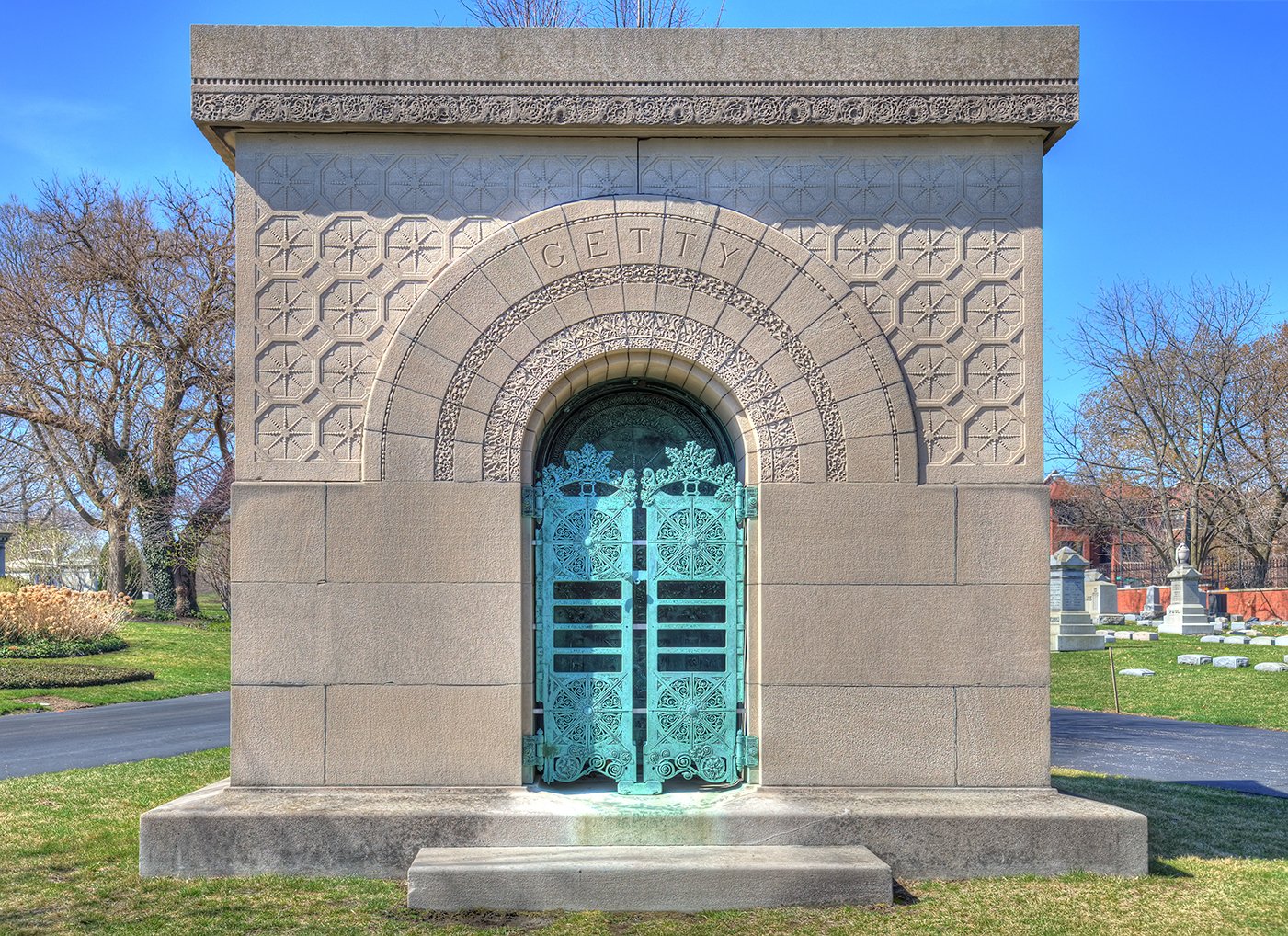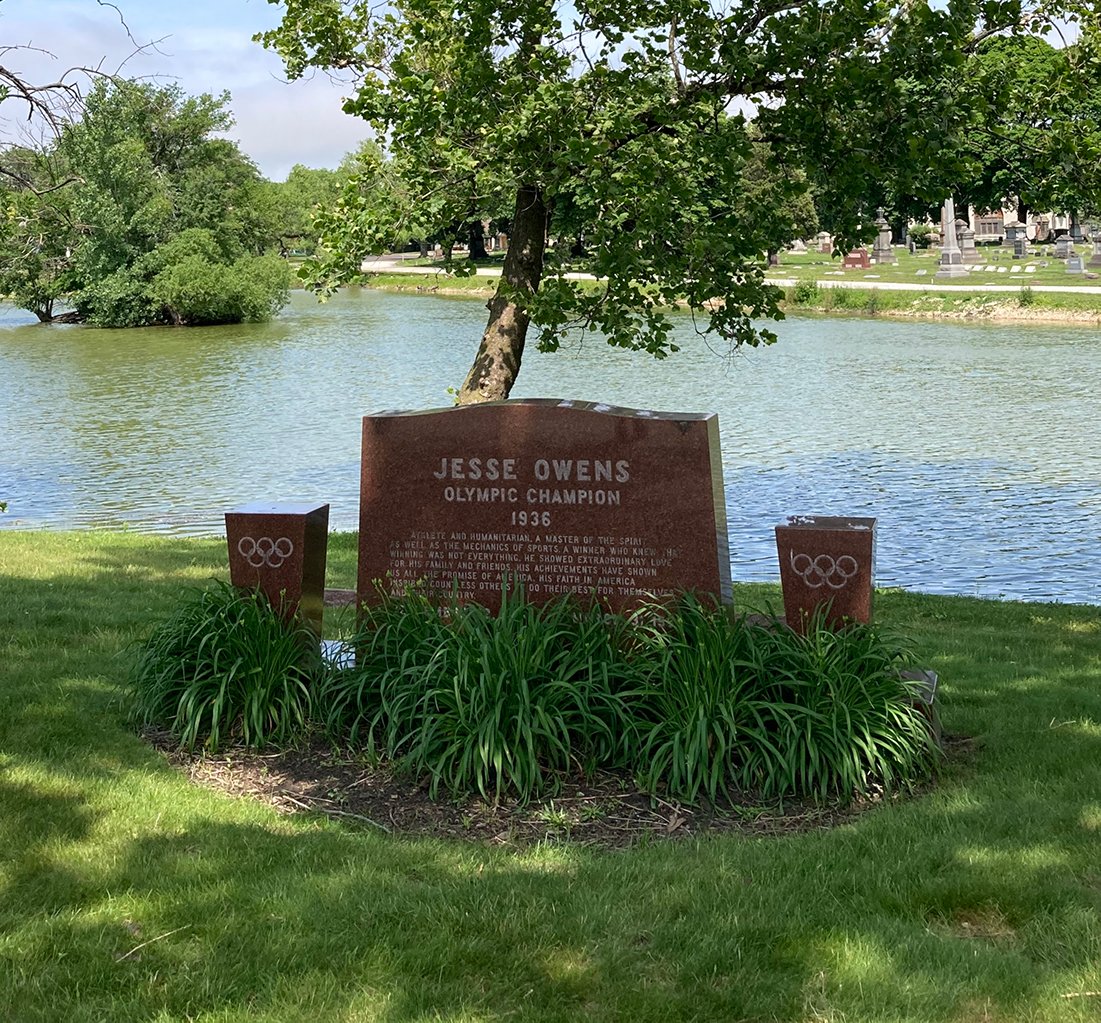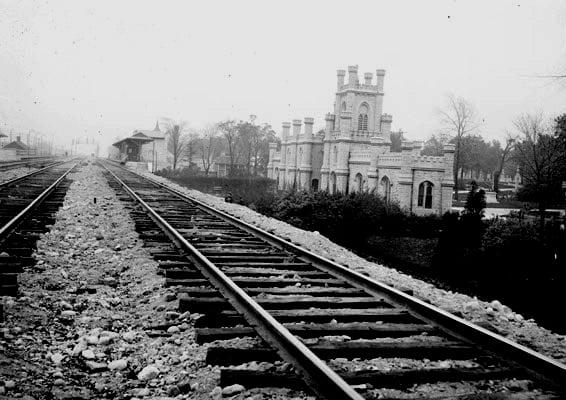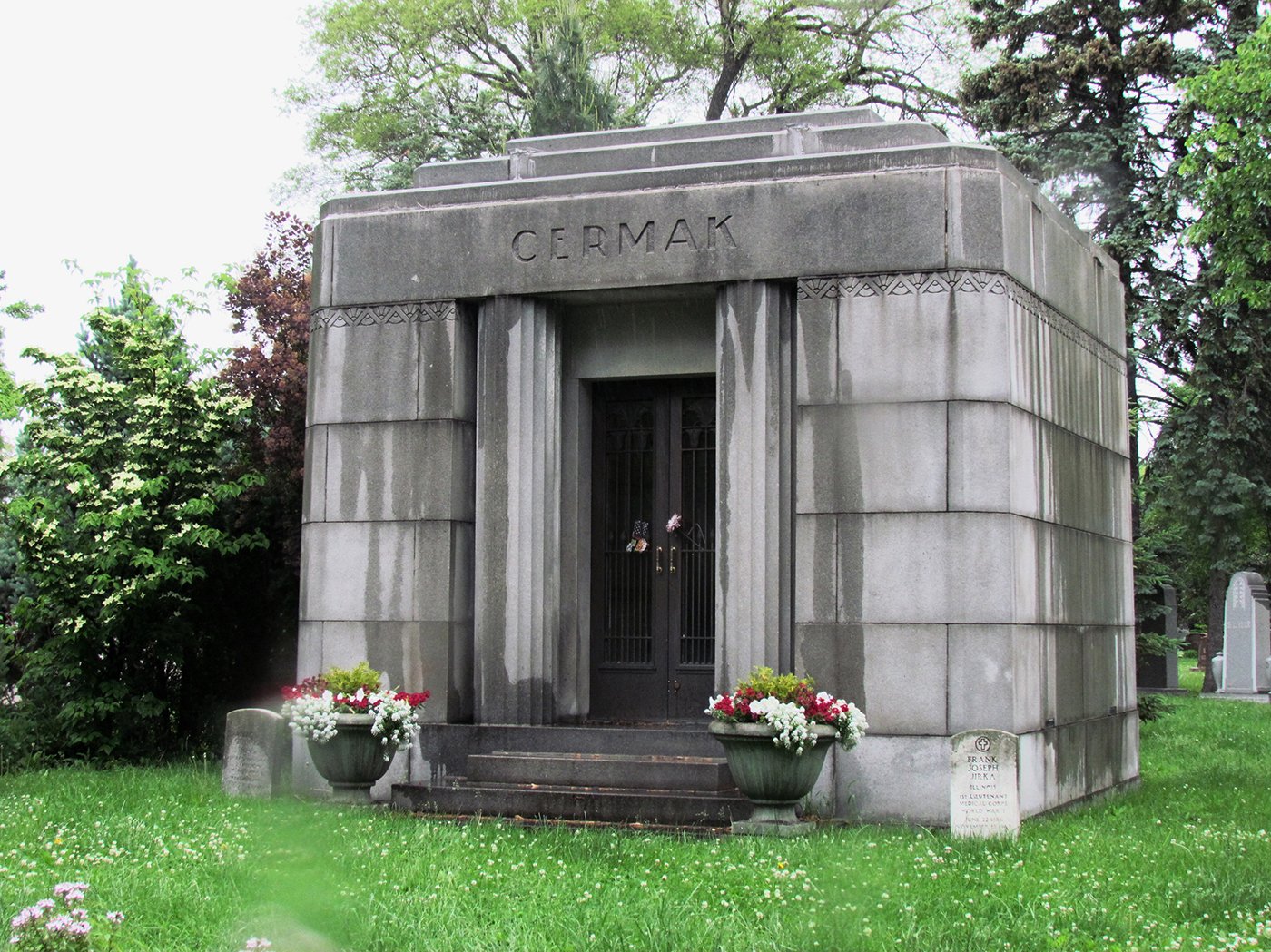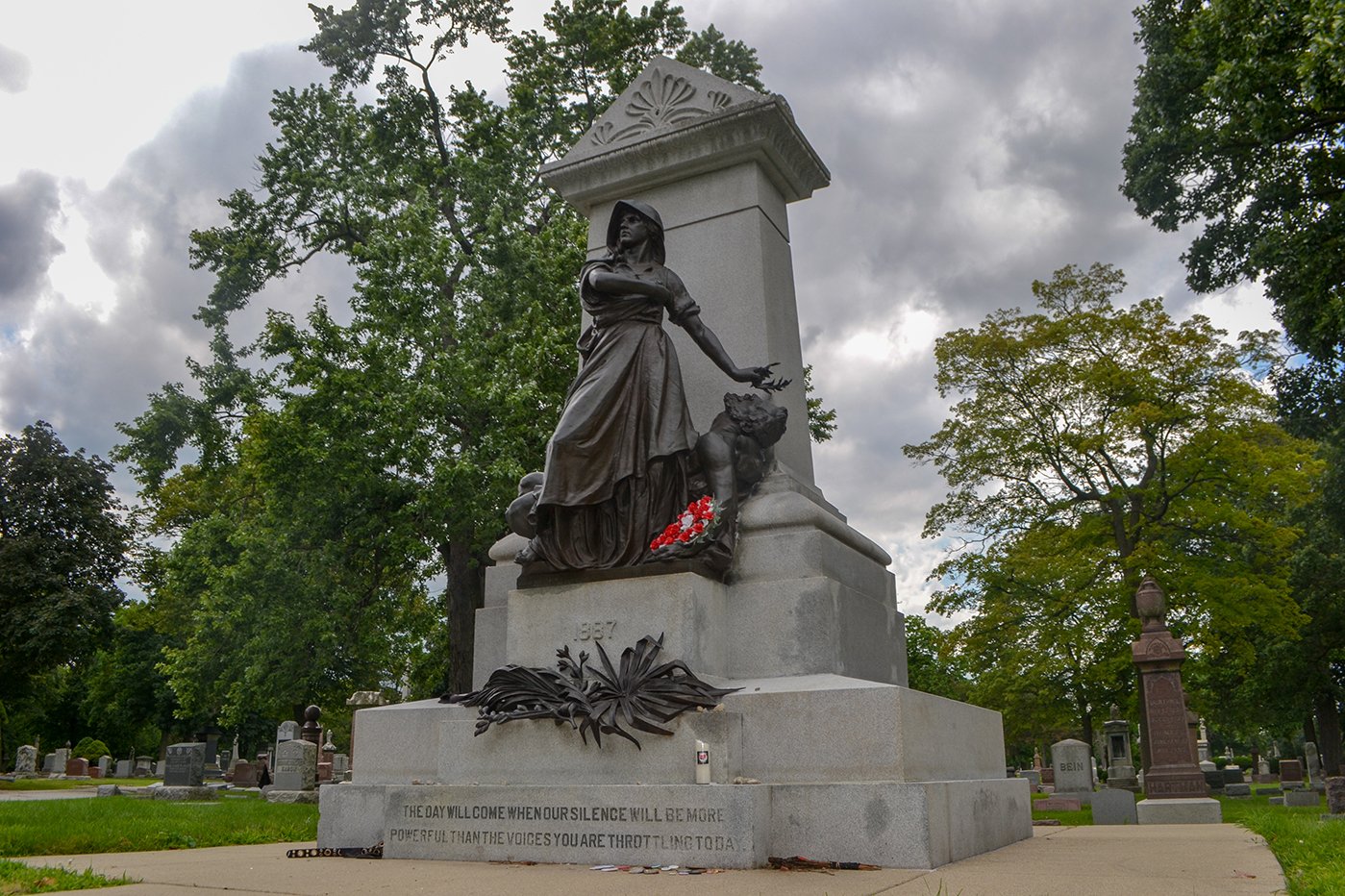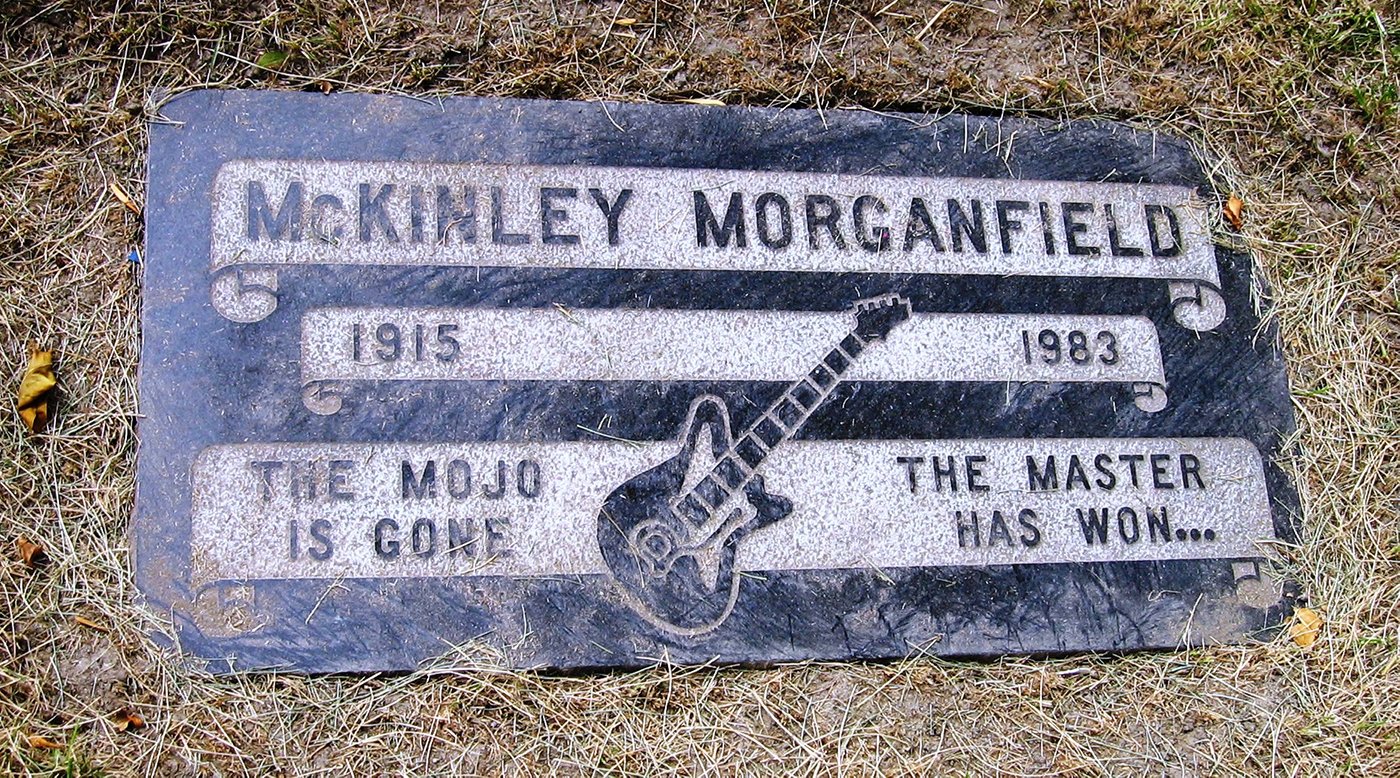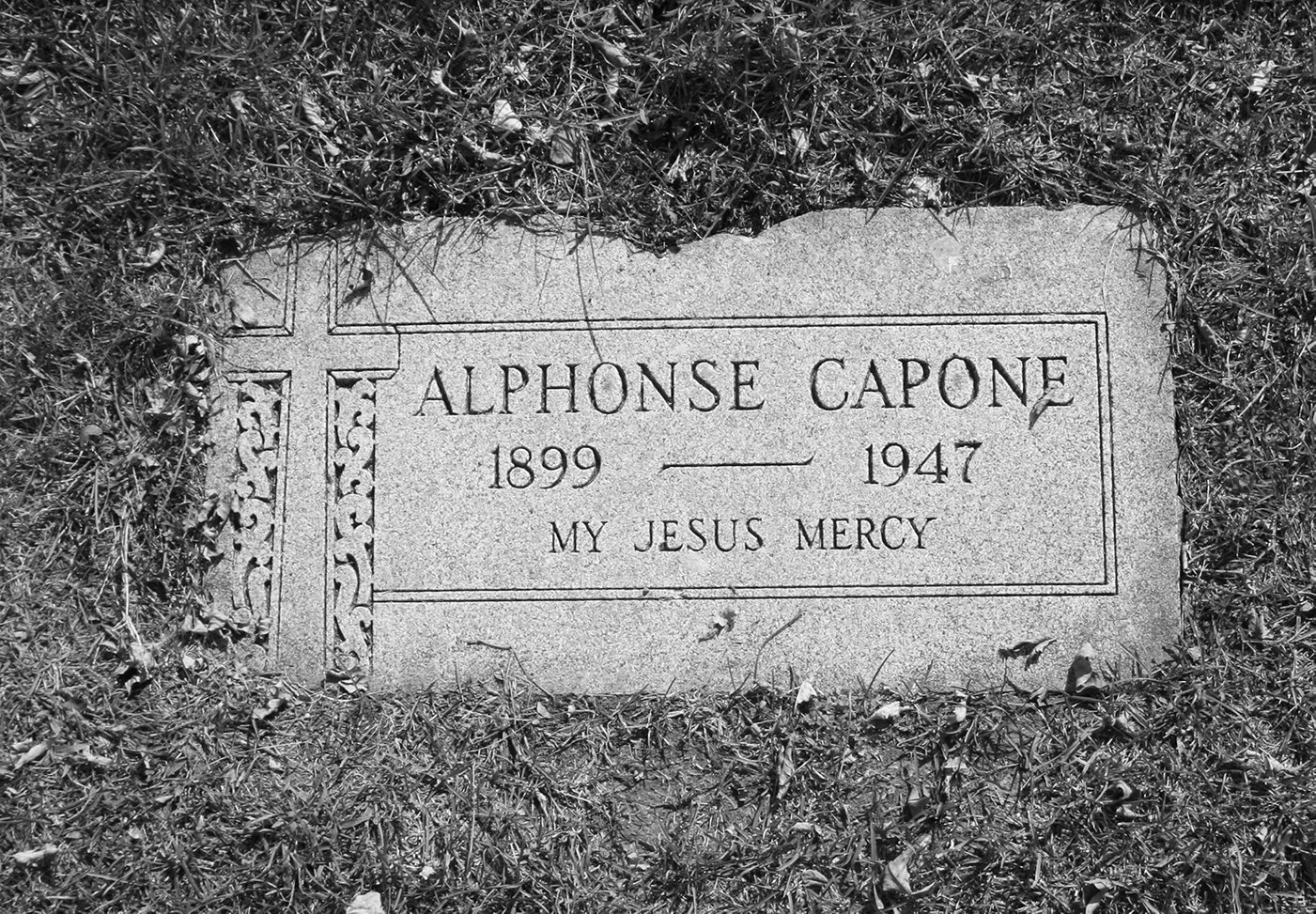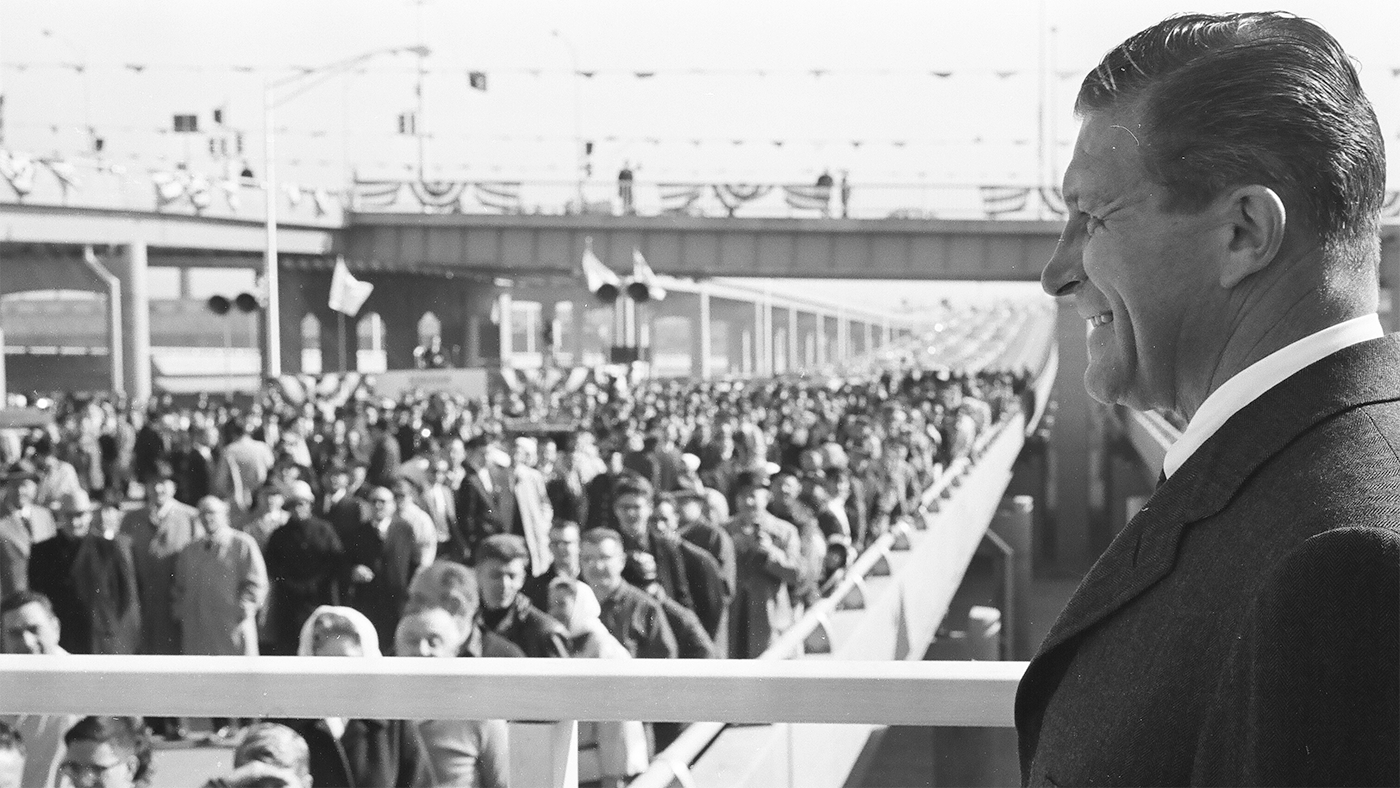Geoffrey Baer Explores Some of Chicago's Cemeteries – And the Stories Buried in Them
Geoffrey Baer
May 2, 2024

One of Chicago’s favorite parks was once a cemetery. In the early days of Chicago, when what is now Lincoln Park was at the edge of the city, the dearly departed were buried there. It was called City Cemetery. But health officials soon raised concerns about decomposing bodies mixing with the lake water that everyone drank, and most of the graves were relocated to other cemeteries that had been established farther from the city center and were eventually connected to it by trains. One mausoleum remains in Lincoln Park, as I explore in my new special Chicago Mysteries.
Its lakefront location notwithstanding, Lincoln Park’s cemetery history is not so unusual. In times past, many cemeteries were the only open space in crowded cities, and people often used them for picnics and pleasant walks. If you’ve ever visited some of the cemeteries in the Chicago area, you might be surprised by how pastoral many of them are. Not only are there elaborate monuments and plenty of prominent deceased Chicagoans’ tombs to be seen – there may also be ponds, attractive trees, curving paths perfect for strolling, and even some rolling elevations, as though you were in a park.
Those newer cemeteries that replaced City Cemetery included places like Graceland, Rosehill, Oak Woods, and Calvary Catholic. Located in then rural areas, they were designed to be parklike, offering a chance for city-dwellers to not just visit late loved ones but also escape the crowded urban metropolis and enjoy nature.
So if you’re looking for a pleasant outing in an unlikely place that also offers plenty of mystery, discover those cemeteries and some newer ones, along with some of the notable people interred in them, below.
Graceland Cemetery
Chicago’s most famous cemetery – and for good reason. This cemetery on the north side was rural when it was founded in 1860, and landscape architect Ossian Cole Simonds preserved the idyllic feel by incorporating native flora, anticipating the Prairie Style that celebrated the Midwest in both architecture and landscape design. A redesigned entryway opened in 2023 continues to incorporate native plants, a fitting focus on nature for a cemetery that is also an arboretum.
But it’s not just the attractive grounds that distinguish Graceland. Many of Chicago’s most famous architects are buried there, with monuments that tend to match their style. Daniel Burnham has his own island, while Mies van der Rohe has an austere slab. The memorial for Bruce Goff, who was known for incorporating unconventional materials, includes a chunk of glass from a house he designed that was destroyed by arson. Louis Sullivan, who revolutionized skyscraper architecture, lacked a grave marker at his death because he died nearly penniless. But admirers of his later installed a boulder on his gravesite incorporating one of his own ornamental designs. Preservationist and photographer Richard Nickel, who died trying to save ornament from a Sullivan building while it was being demolished, is buried there. William Le Baron Jenney, who designed the first skyscraper, worked on the design of Graceland and had his ashes scattered over his wife’s grave there. Structural engineer Fazlur Khan and architect Bruce Graham, who followed in Jenney’s footsteps by scraping the sky with the Sears Tower and Hancock Center, are buried next to each other.
Before his death, Sullivan designed the Egyptian-influenced Ryerson Tomb and highly ornamental Getty Tomb, about which Frank Lloyd Wright said, “Outside the realm of music, what finer requiem?” Marion Mahony Griffin, who was Wright’s first employee and created the stunning architectural renderings of Wright’s work that helped him win many commissions, has a flower from one of her drawings for him on her plaque. Solon S. Beman, who designed the town of Pullman, is buried here. He designed the monument for his boss, George Pullman, who supposedly is buried under lots of steel and concrete so that his body wouldn’t be desecrated by angry workers – although we don’t know for sure if that’s true. Other business and civic leaders in Graceland include Marshall Field, whose tomb was designed by the team behind Washington, D.C.’s Lincoln Memorial; real estate and hotel magnates Potter and Bertha Palmer; and piano maker William Kimball. “Mr. Cub” Ernie Banks has a baseball glove marking his tomb. Another memorable sculpture is Lorado Taft’s haunting Eternal Silence marking the grave of early Chicago settler Dexter Graves. We could go on, but we’ve got other cemeteries to get to, too.
Oak Woods Cemetery
This south side cemetery is full of Black history. Chicago’s first Black mayor, Harold Washington, is buried here, as are the anti-lynching activist and journalist Ida B. Wells, the gospel music pioneer Thomas A. Dorsey, and the track star Jesse Owens. Bishop Louis Henry Ford, who gave the eulogy at Emmett Till’s funeral, is buried next to John Johnson, who published photos of the murdered boy’s mangled corpse in his Jet magazine, helping spark a new phase of the civil rights movement.
Strangely enough, buried in the same cemetery as so many Black heroes are more than 4,000 Confederate soldiers in a mass grave known as the Confederate mound. They were prisoners of war who died while held at Camp Douglas in Chicago and were moved to Oak Woods after originally being buried in what is now Lincoln Park as well as another cemetery.
Oak Woods also contains a Jewish section in which my aunt and uncle are interred.
Rosehill Cemetery
Graceland gets a lot of the fame, but this large cemetery further north has its own share of prominent Chicagoans and notable architecture and sculpture. Its castle-like entrance gate was designed by the Chicago Water Tower’s architect W. W. Boyington, who is also buried there along with other important architects like George Maher. Mail order giants such as Aaron Montgomery Ward, Richard Warren Sears, and Julius Rosenwald are there, with other businessmen such as as well as Marshall Field’s president John G. Shedd and hot dog head honcho Oscar Mayer. There are mayors of Chicago, governors of Illinois, a vice president, and the temperance activist and suffragette Frances E. Willard. There’s even a Civil War section.
Established in 1859, Rosehill was successful in part due to its proximity to railroad tracks, which could bring people from the crowded city to a more parklike setting. (This was also true of Graceland, Oak Woods, Mount Carmel, and cemeteries in Forest Park.) Railroads even rented out funeral cars. When the Chicago and North Western tracks were elevated in 1900, an elevator to bring caskets down to ground level was added at a new station; the elevator structure remains today, although is no longer in use.
Bohemian National Cemetery
A Chicago mayor killed by a bullet meant for Franklin D. Roosevelt is entombed in this cemetery founded by Czech freethinkers in 1877. As a powerful Democrat, Mayor Anton Cermak was visiting Miami with FDR in 1933 when a bullet from a would-be assassin of the president-elect hit Cermak instead. Cermak is reported to have told FDR, “I am glad it was me instead of you,” and the words are etched inside his Art Deco-style mausoleum.
Bohemian National is also the resting place of many victims of the Eastland Disaster as well as a group monument that is celebratory rather than tragic: the Wrigley Field Columbarium, where die-hard Cubs fans can have their cremated remains interred in an ivy-bedecked replica of Wrigley Field complete with bleacher seats, a stone home plate, and a stained-glass depiction of the scoreboard.
Forest Park
It’s said that the population of this western suburb is more dead than alive, since it has more than 800,000 people buried in its five major cemeteries – more than 50 times its living population. Like Rosehill and other cemeteries farther from the city center, train access helped ensure the success of cemeteries in Forest Park, which is still the western terminus of the CTA’s Blue Line. The area contains centuries-old Potawatomi burial mounds in addition to the cemeteries founded by European immigrants starting in the later nineteenth century.
Forest Home Cemetery is the resting place of the four anarchists hanged as a result of the Haymarket Affair. The famous political radical Emma Goldman requested a burial near them, which led to further revolutionaries creating a “Radical Row” there, including the fiery Lucy Parsons. Woodlawn Cemetery includes a memorial known as Showmen’s Rest, where members of a circus who died in a devastating train crash near Hammond, Indiana are buried. It is guarded by five stone elephants and continues to welcome circus performers who pass away. Forest Park also contains Jewish Waldheim Cemetery, which is the largest Jewish burial ground in the Chicago area, according to the Forest Park Review.
South Suburban Historically Black Cemeteries
A cluster of cemeteries in the south suburbs of Chicago is the final resting place of an impressive array of Black Chicagoans, who faced racism and discrimination in Chicago. Emmett Till and his mother Mamie Till-Mobley are buried in Burr Oak Cemetery in Alsip, as are the musicians Dinah Washington and Willie Dixon. So are Lorraine Hansberry’s father, Carl, and Earl B. Dickerson, the attorney who won a case before the U.S. Supreme Court on behalf of Carl against restrictive racial covenants that prevented Black people from moving into white neighborhoods. That struggle was the basis of Lorraine Hansberry’s landmark play A Raisin in the Sun. Dickerson also helped establish Burr Oak Cemetery. The cemetery underwent a sordid drama out of theater in 2009, when employees were accused of digging up bodies and then reselling their plots.
Restvale Cemetery, also in Alsip, contains the modest grave of Muddy Waters. (The Rolling Stones know very well where it is. They visit it to pay their respects whenever they’re in town, according to a Chicago Tribune story.) And Lincoln Cemetery in neighboring Blue Island has pioneering aviator Bessie Coleman, Chicago Defender publisher Robert Sengstacke Abbott, poet Gwendolyn Brooks (whose monument looks like a book), librarian Vivian Harsh, Negro Leagues trailblazer Rube Foster, and the musicians Lil Hardin Armstrong and Big Bill Broonzy. Eugene Williams, the seventeen-year-old whose killing after he drifted into the white part of a segregated beach kindled Chicago’s horrific 1919 race riot, is also buried there.
Mount Carmel Cemetery
Organized religion and organized crime share ground in this Catholic cemetery in west suburban Hillside. Numerous bishops and archbishops of the Roman Catholic Archdiocese of Chicago are buried there in an angel-topped mausoleum. There are also a number of graves for people associated with organized crime in Chicago, most infamously Al Capone.
Another suburban Catholic cemetery, Calvary Catholic on the border of Evanston and Chicago at Lake Michigan, has its own cadre of influential people. In addition to White Sox founder Charles Comiskey, it is home to numerous congressmen and mayors, including Jane Byrne.

